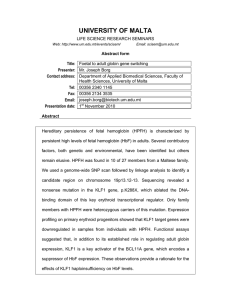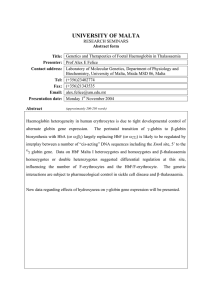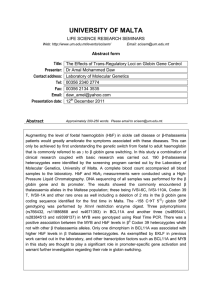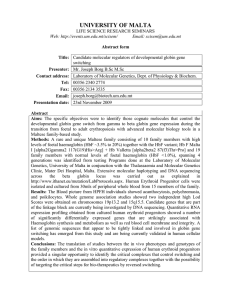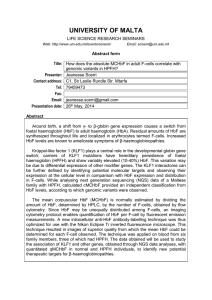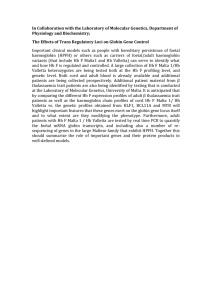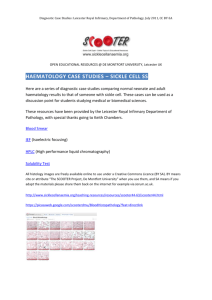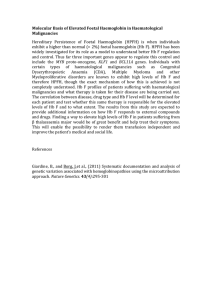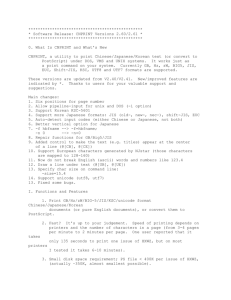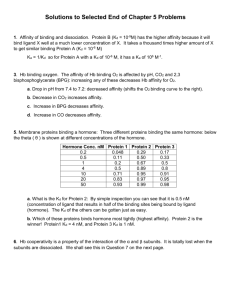UNIVERSITY OF MALTA
advertisement
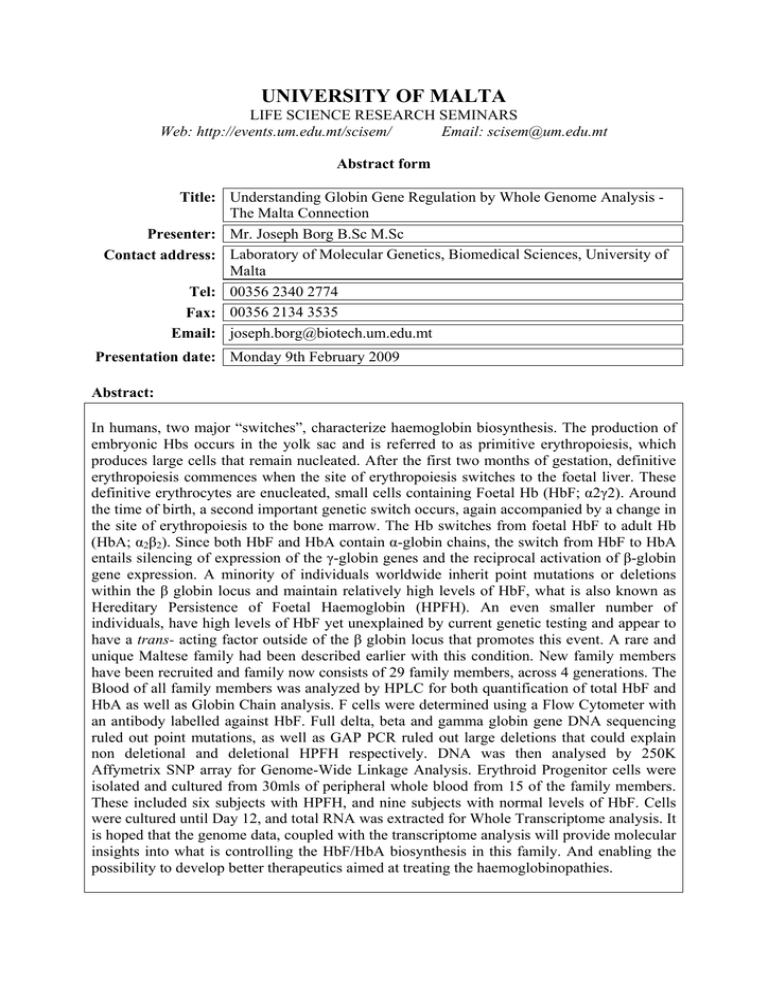
UNIVERSITY OF MALTA LIFE SCIENCE RESEARCH SEMINARS Web: http://events.um.edu.mt/scisem/ Email: scisem@um.edu.mt Abstract form Title: Understanding Globin Gene Regulation by Whole Genome Analysis The Malta Connection Presenter: Mr. Joseph Borg B.Sc M.Sc Contact address: Laboratory of Molecular Genetics, Biomedical Sciences, University of Malta Tel: 00356 2340 2774 Fax: 00356 2134 3535 Email: joseph.borg@biotech.um.edu.mt Presentation date: Monday 9th February 2009 Abstract: In humans, two major “switches”, characterize haemoglobin biosynthesis. The production of embryonic Hbs occurs in the yolk sac and is referred to as primitive erythropoiesis, which produces large cells that remain nucleated. After the first two months of gestation, definitive erythropoiesis commences when the site of erythropoiesis switches to the foetal liver. These definitive erythrocytes are enucleated, small cells containing Foetal Hb (HbF; α2γ2). Around the time of birth, a second important genetic switch occurs, again accompanied by a change in the site of erythropoiesis to the bone marrow. The Hb switches from foetal HbF to adult Hb (HbA; α2β2). Since both HbF and HbA contain α-globin chains, the switch from HbF to HbA entails silencing of expression of the γ-globin genes and the reciprocal activation of β-globin gene expression. A minority of individuals worldwide inherit point mutations or deletions within the β globin locus and maintain relatively high levels of HbF, what is also known as Hereditary Persistence of Foetal Haemoglobin (HPFH). An even smaller number of individuals, have high levels of HbF yet unexplained by current genetic testing and appear to have a trans- acting factor outside of the β globin locus that promotes this event. A rare and unique Maltese family had been described earlier with this condition. New family members have been recruited and family now consists of 29 family members, across 4 generations. The Blood of all family members was analyzed by HPLC for both quantification of total HbF and HbA as well as Globin Chain analysis. F cells were determined using a Flow Cytometer with an antibody labelled against HbF. Full delta, beta and gamma globin gene DNA sequencing ruled out point mutations, as well as GAP PCR ruled out large deletions that could explain non deletional and deletional HPFH respectively. DNA was then analysed by 250K Affymetrix SNP array for Genome-Wide Linkage Analysis. Erythroid Progenitor cells were isolated and cultured from 30mls of peripheral whole blood from 15 of the family members. These included six subjects with HPFH, and nine subjects with normal levels of HbF. Cells were cultured until Day 12, and total RNA was extracted for Whole Transcriptome analysis. It is hoped that the genome data, coupled with the transcriptome analysis will provide molecular insights into what is controlling the HbF/HbA biosynthesis in this family. And enabling the possibility to develop better therapeutics aimed at treating the haemoglobinopathies.
